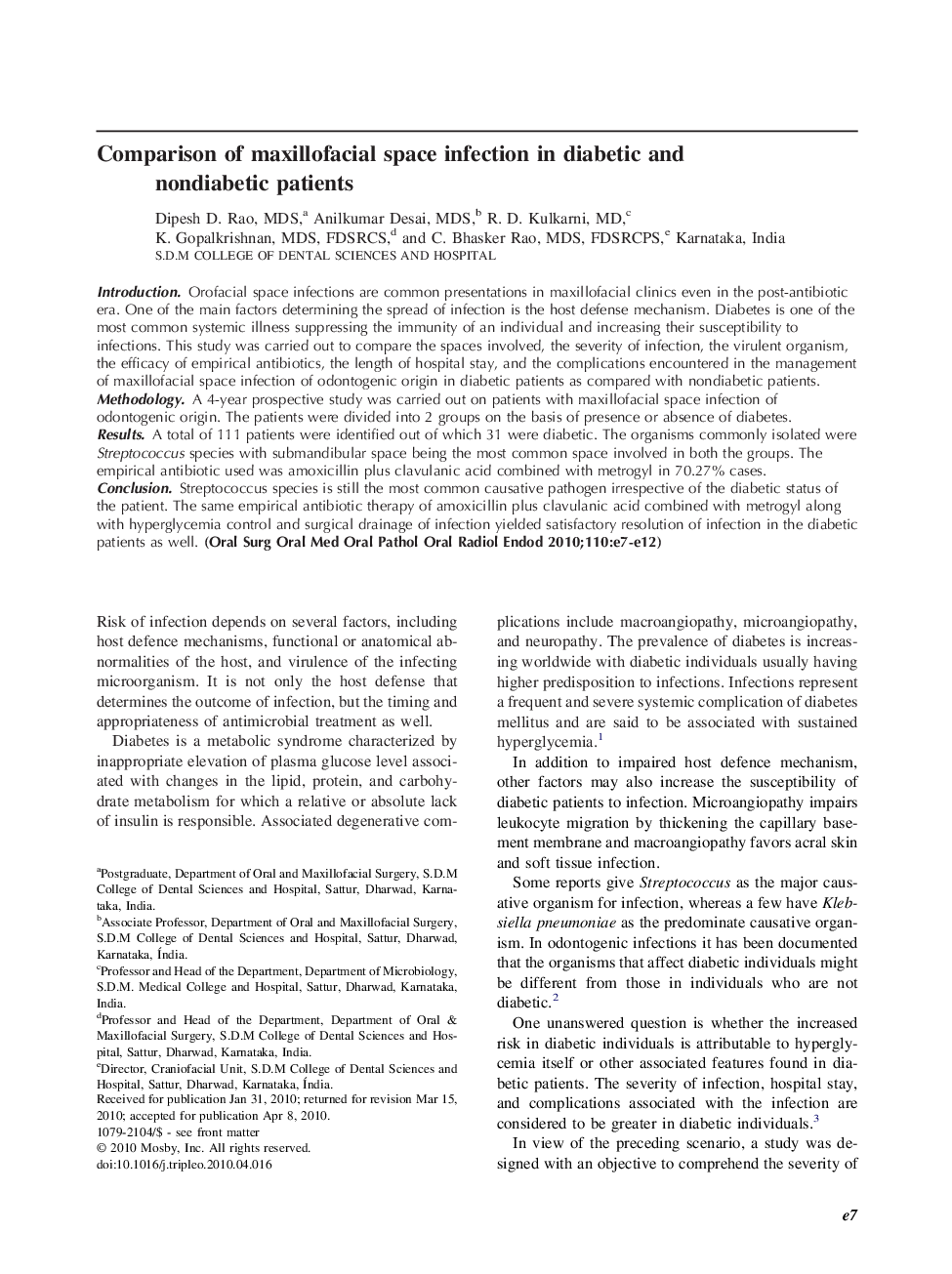| Article ID | Journal | Published Year | Pages | File Type |
|---|---|---|---|---|
| 3167311 | Oral Surgery, Oral Medicine, Oral Pathology, Oral Radiology, and Endodontology | 2010 | 6 Pages |
IntroductionOrofacial space infections are common presentations in maxillofacial clinics even in the post-antibiotic era. One of the main factors determining the spread of infection is the host defense mechanism. Diabetes is one of the most common systemic illness suppressing the immunity of an individual and increasing their susceptibility to infections. This study was carried out to compare the spaces involved, the severity of infection, the virulent organism, the efficacy of empirical antibiotics, the length of hospital stay, and the complications encountered in the management of maxillofacial space infection of odontogenic origin in diabetic patients as compared with nondiabetic patients.MethodologyA 4-year prospective study was carried out on patients with maxillofacial space infection of odontogenic origin. The patients were divided into 2 groups on the basis of presence or absence of diabetes.ResultsA total of 111 patients were identified out of which 31 were diabetic. The organisms commonly isolated were Streptococcus species with submandibular space being the most common space involved in both the groups. The empirical antibiotic used was amoxicillin plus clavulanic acid combined with metrogyl in 70.27% cases.ConclusionStreptococcus species is still the most common causative pathogen irrespective of the diabetic status of the patient. The same empirical antibiotic therapy of amoxicillin plus clavulanic acid combined with metrogyl along with hyperglycemia control and surgical drainage of infection yielded satisfactory resolution of infection in the diabetic patients as well.
